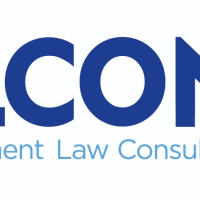Predicting Chemical Exposure from Hand Injuries Using Deep Learning
Predicting the chemical exposure associated with hand injuries is a critical challenge in healthcare, demanding swift identification for precise and targeted treatment. This article explores integrating advanced deep learning techniques to forecast the specific chemical responsible for injuries, leveraging artificial intelligence and pattern recognition. The objective is to establish a predictive model that associates distinctive wound features with potential causative agents, offering medical professionals a tool for rapid and accurate diagnosis and treatment of chemical-induced hand injuries.

Data Collection and Preprocessing:
The foundation of model development rests on a comprehensive dataset containing images and descriptions of hand injuries caused by various known chemicals. Data preprocessing entails standardizing images and converting textual descriptions into a structured format suitable for model input.
Model Development:Choosing the appropriate deep learning architecture is pivotal. Convolutional Neural Networks (CNNs) for image data and Recurrent Neural Networks (RNNs) for text data serve as fundamental building blocks. The model undergoes training with the dataset to grasp the intricate relationships between chemical exposures and resulting injuries.
Model Training and Evaluation:Optimizing the model involves adjusting parameters to minimize errors and enhance accuracy. Evaluation employs separate test datasets, measuring accuracy, precision, recall, and F1 score to gauge performance robustly.
Challenges and Ethical Considerations:Development encounters challenges regarding dataset size, accuracy, biases, and privacy concerns. The emphasis is placed on cultivating a diverse and ethically sourced dataset, mitigating biases, and safeguarding patient privacy as paramount considerations in the development process.
Closing Thoughts:While developing a deep learning model for predicting chemicals from hand injuries holds promise for revolutionizing identification, addressing challenges in dataset quality, model accuracy, and ethical considerations is imperative. Responsible and effective implementation in the medical domain demands a comprehensive approach.
Future Implications:The potential of deep learning to predict chemical exposure from hand injuries signifies a paradigm shift in medical care. Future advancements may pave the way for more accurate and rapid identification of the substances involved, ultimately leading to enhanced patient care and outcomes.
At Techno Kryon, it is our mission to help businesses of all sizes and a wide range of industries including
Labour’s new Employment Rights Bill: challenges employers...
More Articles
The Value of a Sustainability Strategy in the Tender Process
Unlocking the Power of Raw Financial Data
Would you like to promote an article ?
Post articles and opinions on Professionals UK
to attract new clients and referrals. Feature in newsletters.
Join for free today and upload your articles for new contacts to read and enquire further.







